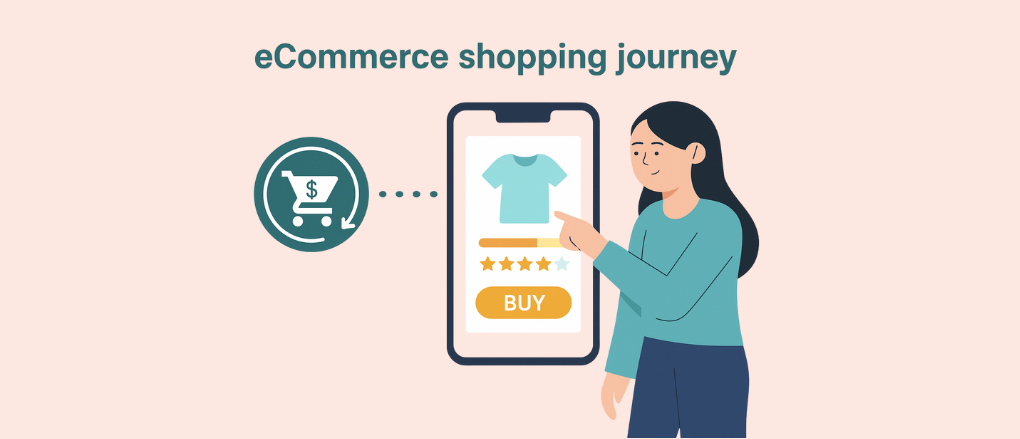6 Halloween Marketing Ideas That Drive Terrifyingly Good Results (With Examples)
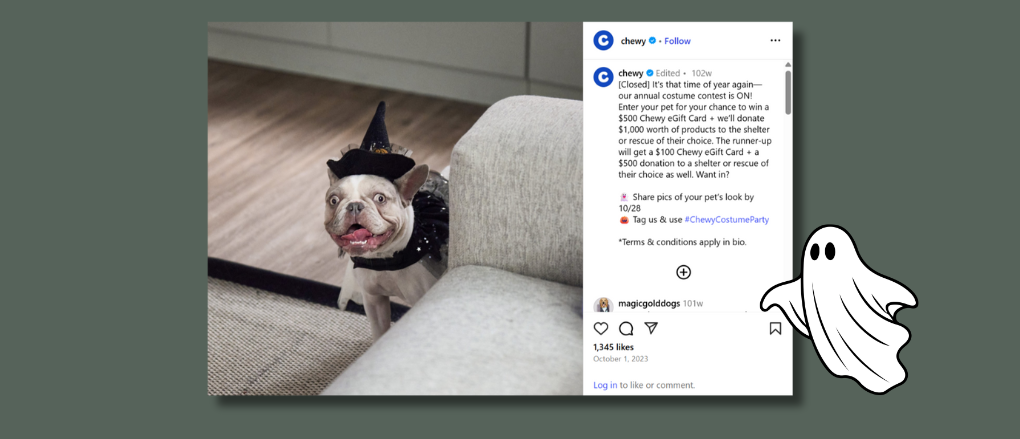
Halloween marketing is no trick.
It’s a $12+ billion treat for Shopify merchants who know how to tap into it.
Every October, shoppers go a little crazy with their spending, snapping up costumes, candy, and creepy décor faster than you can say “Pumpkin Spice Latte.”
The best part? You don’t need to sell witches’ hats or fake cobwebs to cash in.
With the right Halloween marketing ideas, any store, whether you sell beauty products, pet gear, or home décor, can transform seasonal buzz into a scary-good revenue spike.
Let’s jump in.
{{cool-component="/style"}}
Quickfire Halloween Marketing Statistics You Need to Know
Let’s cut through the fog. These are the key numbers you should keep front of mind as you plan your Halloween marketing.
- In 2024, Halloween spending in the US hit ~ $11.6 billion, covering costumes, decorations, candy, and cards.
- That’s slightly down from 2023’s record of $12.2 billion, but analysts expect a rebound heading into 2025.
- 49% of shoppers say they will begin shopping for Halloween before October.
- Roughly 72% of households participate in Halloween-related activities.
- The average person celebrating spent $103.63 in 2024.
- Online demand is surging: Halloween-related ecommerce sales grew by 16% year over year, with 40% of purchases done via mobile devices.
Source: https://nrf.com/blog/spooky-season-is-here-and-retailers-are-ready
6 Real-World Halloween Marketing Ideas to Try
Now that we’ve covered the big-picture stats, let’s dig into how brands are actually putting Halloween marketing into play. These examples aren’t theory, they’re real campaigns you can swipe ideas from.
1. Pipcorn’s Halloween Bundle Campaign
Pipcorn leaned into spooky season with a “Build Your Own Bundle” email. They went all-in on Halloween vibes - chunky haunted-house fonts, a purple-orange palette, and cheeky discount codes like Spooky4 and Spooky12.
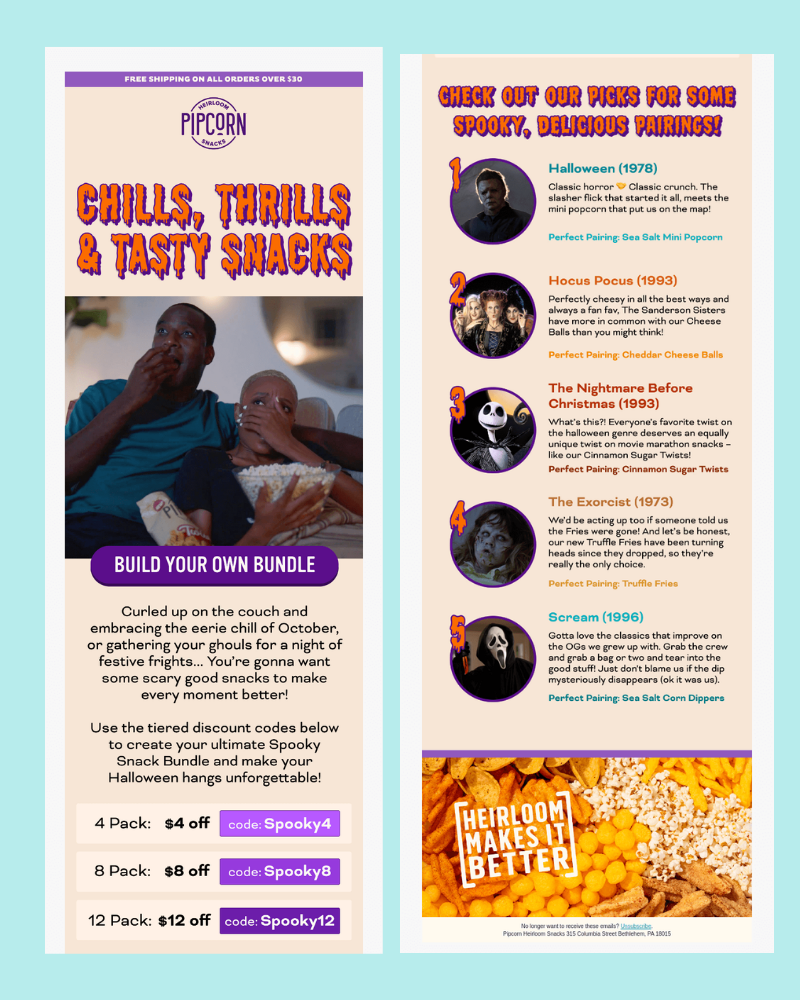
To top it off, they paired their snacks with classic Halloween flicks (Hocus Pocus, The Exorcist, The Nightmare Before Christmas), turning a bag of popcorn into a full-blown movie night.
It’s clever because it doesn’t just sell snacks, it sells an experience. The tiered discounts push people to buy more, the bundle concept gives you freedom to pick your favorites, and the movie tie-ins tap into nostalgia.
So, ask yourself: what’s the “Halloween movie night” version of your product? Maybe it’s a candle set for a cozy haunted evening, or a pet costume paired with themed treats. Wrap your offer in a seasonal story, keep the vibe lighthearted, and watch customers hit “add to cart” faster than you can say boo.
2. Tattly’s “One Day Only” Flash Sale
Tattly, a temporary tattoo brand, went full Halloween with a bold email promo: 31% off, one day only.

The design leaned into a gothic vibe - bones, moons, creepy icons - set against a black background. The discount code ‘OURTREAT’ nailed the theme without feeling cheesy, and the giant “It Ends Tonight” banner doubled down on urgency.
This campaign is a masterclass in simplicity. The offer is crystal clear, the theme screams Halloween, and the time limit forces quick decisions.
By showcasing different tattoo sheets, Tattly also tapped into variety, something for everyone, but still framed as a limited-time deal. It’s sharp, seasonal, and impossible to ignore.
You don’t need fancy campaigns to make Halloween work for your brand. A time-boxed flash sale with a playful, spooky twist on your discount code can be just as powerful. Keep the design bold, the offer unmistakable, and don’t be afraid to say, “Hey, this deal dies at midnight.”
3. Chewy’s Pet Costume Contest
Chewy leaned into the Halloween craze with a user-generated content contest. Pet parents were asked to share photos of their furry friends dressed up for spooky season, with the chance to win a $500 gift card.
To sweeten the deal, Chewy also pledged donations to animal shelters chosen by winners. The hashtag #ChewyCostumeParty tied it all together and made entries easy to track.
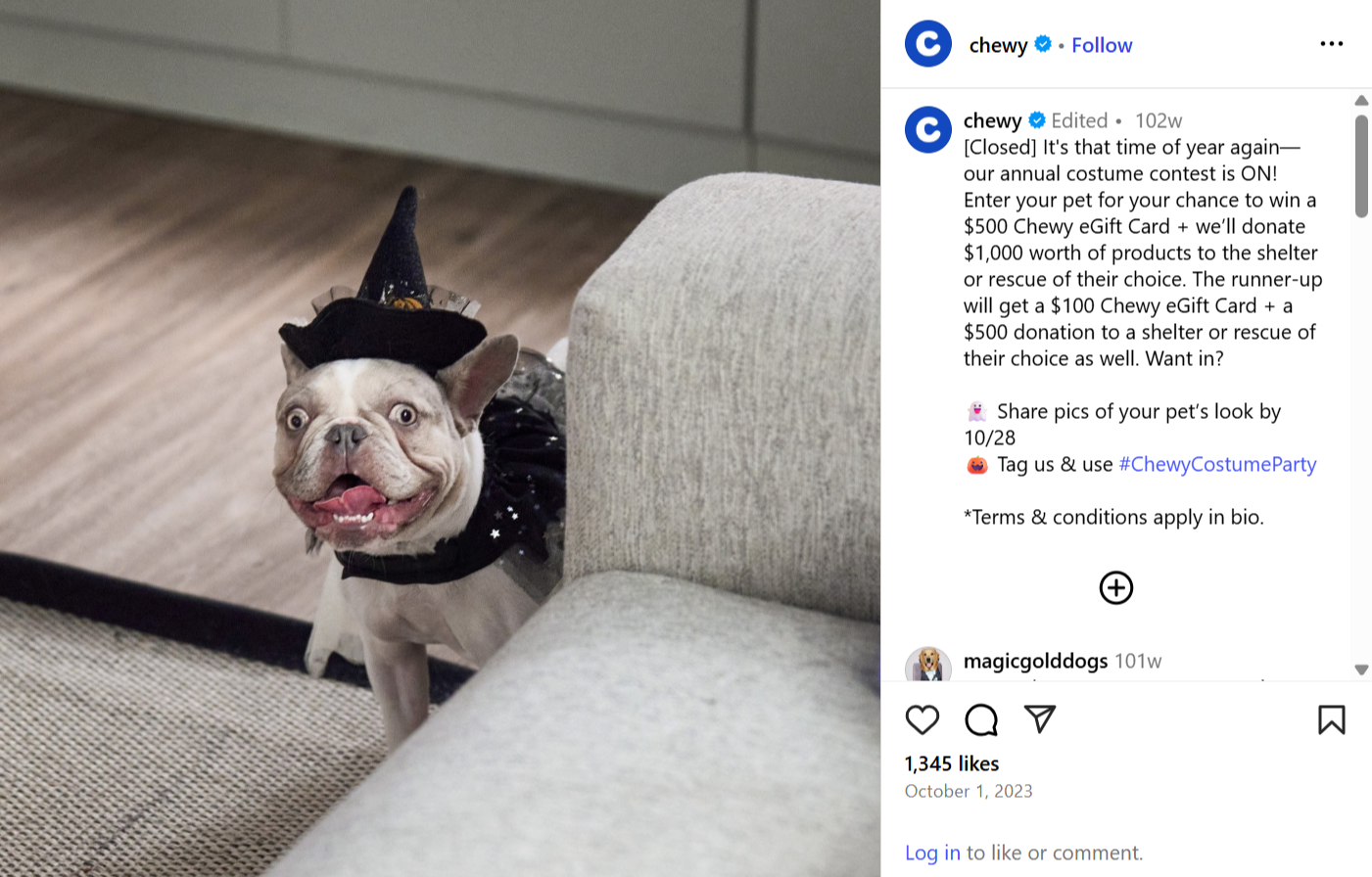
First off, who can resist a pug in a witch hat? Beyond the cuteness, this campaign nailed engagement.
It boosted brand visibility on Instagram, turned customers into content creators, and layered in a feel-good cause. That mix of fun, community, and social impact makes people want to join in, not just for the prize, but to be part of the moment.
Think about how your products fit into a Halloween photo opp. Whether it’s costumes, décor, food, or accessories, challenge your customers to share their seasonal creativity with a branded hashtag.
Keep the barrier to entry low, add a small prize or incentive, and tie in a charitable angle. It’s a simple way to spark buzz while filling your content calendar with authentic, shareable posts.
4. Halloween-Themed Cart Cross-Sells
Cozy Coven uses a Halloween cart upsell to tempt shoppers with seasonal extras. After adding a Pumpkin Spice Mug, buyers saw a cheeky upsell: a Pumpkin Patch Soy Candle for $9.99 or a Skull Mug for $12.99.
The popup leaned into festive colors, bats, and playful copy: “Don’t ghost these limited-time treats!”

The timing is perfect, shoppers are already committed, so suggesting a small, seasonal add-on feels like an easy win. The design screams Halloween, the price points are low-risk, and the urgency makes it irresistible.
Add a themed cart-upsell at checkout with one or two “treat” products that feel like natural companions to your main items. Keep the copy lighthearted, the pricing tempting, and let the season do the heavy lifting.
5. Polaroid’s “Capture This Spooky Season” Campaign
Polaroid ran a Halloween email campaign spotlighting the Polaroid Go Camera. Instead of slapping a pumpkin emoji on a promo, they leaned into the experience of Halloween.
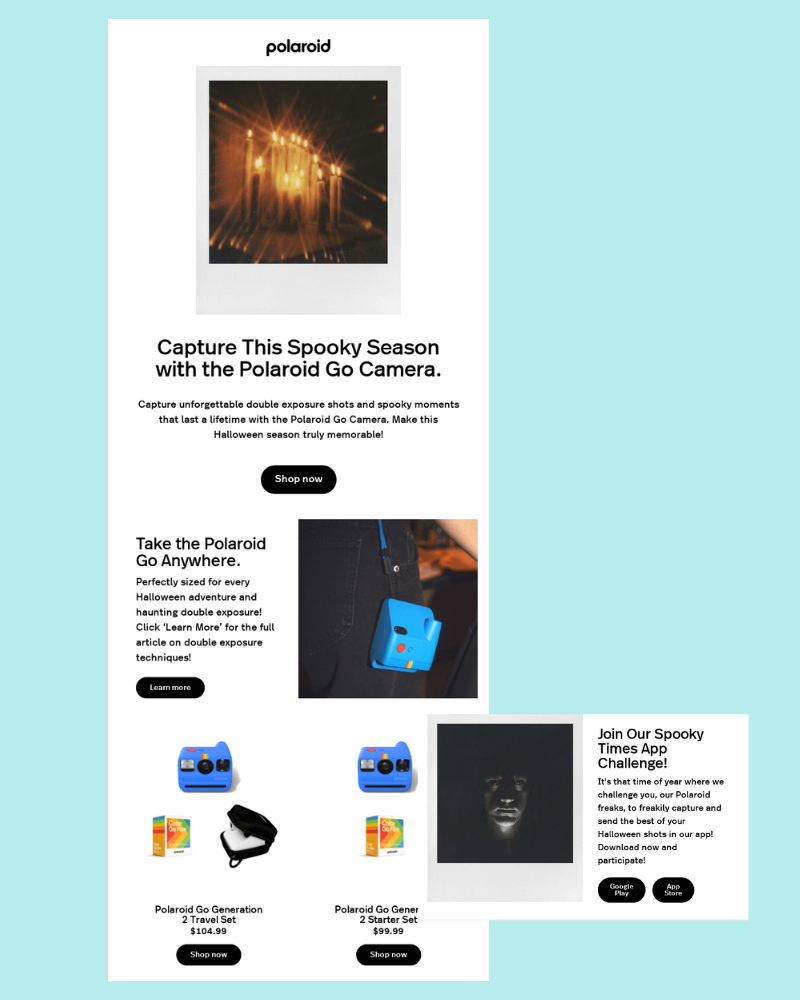
Double exposure shots, eerie lighting, and capturing ghostly moments you’ll want to keep forever. The email tied product features directly to spooky season use cases, while also plugging a “Spooky Times App Challenge” to drive community engagement.
Polaroid didn’t discount their product - they reframed it. By positioning the camera as a tool to make Halloween memories “truly unforgettable,” they tied a non-seasonal product to a seasonal need. The bonus app challenge layered on engagement, encouraging customers to not just buy, but create and share.
You don’t need a Halloween-specific product to win. Think about how your core items can participate in seasonal rituals. A skincare brand could pitch “Halloween party prep kits,” or a kitchenware store could promote “pumpkin-carving essentials.” It’s about context - showing how your product fits the moment.
6. Sephora’s Halloween Makeup Tutorials
Instead of blasting discounts, Sephora leaned into content-driven marketing. On their blog, they published step-by-step Halloween makeup tutorials (like this clown look), weaving in Sephora Collection products throughout.
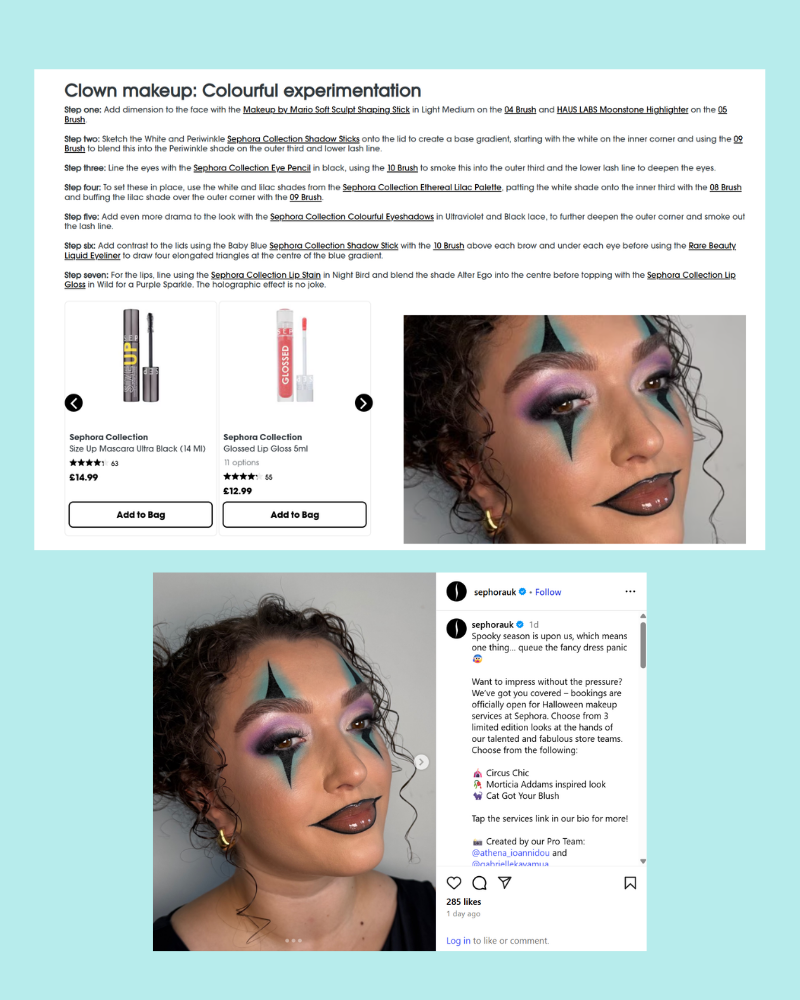
Each step is linked directly to the product used, making the tutorial shoppable. The post combined visuals, clear instructions, and easy add-to-cart options right below the tutorial.
This is genius because it flips the script - customers aren’t just being sold to, they’re being helped. By showing how to achieve fun, bold Halloween looks, Sephora positions its products as the tools for creativity.
It’s value-first marketing: readers come for inspiration, stay for the tutorial, and leave with products in their cart. It also boosts SEO traffic since “Halloween makeup ideas” is a seasonal search magnet.
Think about the questions your audience is Googling around Halloween. Maybe it’s “easy last-minute Halloween recipes” or “how to throw a spooky dinner party.”
Create content that genuinely helps, then naturally showcase your products as the solution. Bonus points if you make it shoppable so readers can go from inspo to purchase in a single click.
7. Bonus Halloween Marketing Tips
We’ve looked at how brands like Pipcorn, Tattly, Chewy, Polaroid, and Sephora make Halloween work for them. Different tactics, same goal: turn spooky season into serious sales. But here’s the thing: Halloween moves fast, and not every store has weeks to plan elaborate campaigns.

The good news? A few simple tweaks to your existing setup can give you a seasonal lift without reinventing the cauldron.
Not every brand has the budget or bandwidth to whip up a giant Halloween campaign. Luckily, you don’t need to. Sometimes the small, scrappy plays are just as effective. Here are a few extra tricks (and treats) you can roll out quickly:
- Start early, finish strong. Kick things off in late September to capture planners, but don’t forget last-minute buyers. A “final 48 hours” campaign the week of Halloween can drive a surprising spike.
- Seasonal overlays. Add a simple banner or popup with spooky copy, limited-time codes, or countdown timers. It’s quick to implement and instantly creates urgency.
- Themed loyalty rewards. Offer double points for Halloween week, or create a one-time “Spooky Shopper” badge to gamify the season.
- Social quick wins. Drop a themed poll, meme, or quiz on Instagram or TikTok. Engagement goes up, and it costs you nothing.
- Segment your audience. Parents, pet owners, and Gen Z all celebrate differently - tailor offers to the group most likely to respond.
Use These Halloween Marketing Ideas Today!
Halloween is short, but the opportunity is scary big. From bundles and upsells to contests and content, the merchants who lean into the season see real lifts in conversions and average order value. The key is speed—don’t overthink it, just make your products part of the Halloween moment and keep it fun.
If there’s one thing to remember, it’s this: you don’t need to sell costumes or candy to cash in. With the right spin, almost any product can ride the Halloween wave.
👉 Ready to turn October into your most profitable month? Try Upsell.com free today and launch high-converting upsell flows that work for Halloween and beyond.
{{cool-component="/style"}}







